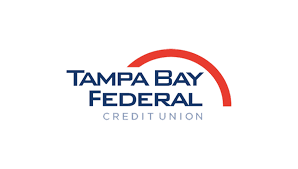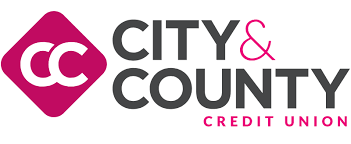Customers are increasingly expecting their financial services providers to treat them as unique individuals, offering them services that are matched exactly to their own personal circumstances. Against such a backdrop, embracing data analytics is essential for the future of banking. It enables institutions to stay competitive, enhance customer experiences, and manage risk more effectively in
Open banking is a system where credit unions, together with banks and other financial institutions, allow third-party providers, such as fintech companies to access customers’ financial data.
However, there is a very important caveat – it can only be done with the customer’s consent.
The idea behind open banking is to increase competition, innovation, and customer control in the financial industry. For example, instead of being locked into one credit union’s services, you can now connect your account to other apps and get smarter, more tailored financial options.
Let us examine the concept of open banking and open banking trends in more detail.
How does open banking work?
The first step starts with arguably the most important aspect – the customer provides permission by choosing to connect a third-party app, like a budgeting app, loan comparison tool, or investment platform, to their credit union account.
Before anything happens, the customer has to authorize it — usually through a secure login or authentication process such as a fingerprint, face ID or two-factor authentication.
Once authorization has been received, the credit union provides a secure “door” – known as an API – that trusted apps can use. Through this API, only the data the customer has agreed to share is sent to the third-party app. It is important to highlight that no passwords are shared – only encrypted, limited data flows.
The third-party app is then able to use the customer’s credit union data to offer services such as showing you a smart budget, finding a better loan deal, suggesting ways to save money or giving financial advice tailored to actual spending.
Customers can revoke consent anytime and only apps registered and approved by regulators can use open banking.
The benefits of open banking for consumers, credit unions and fintechs.
There are a myriad of open banking benefits for all key stakeholders. For consumers themselves, the main ones include the following:
- More choice and competition: Customers can easily compare and switch between credit unions, loans, savings accounts, and investment options.
- Better financial services: Apps can analyze real spending to give smarter budgeting, saving, and investment advice.
- Convenience: Customers can see all accounts, even from different providers, in one app. They can also move money, apply for credit, or get a loan instantly.
- More control over data: Consumers can decide who can access their information — and they can cancel access whenever they want.
For credit unions and other financial providers, the key benefits include the following:
- New business models: Instead of just holding money, credit unions can offer new services like digital wallets, partnerships with fintechs, or premium finance apps.
- Customer loyalty: By building better apps and offering smarter services, financial providers can keep customers happy and loyal.
- Revenue from APIs: It is possible to create APIs that fintechs pay to use, opening new income streams.
- Better risk assessment: With richer customer data, credit unions can better judge credit risk and offer more personalized loans or products.
When it comes to fintechs, the benefits of open banking include:
- Access to real customer data: Fintechs can offer customized services based on actual spending behavior, not just estimates.
- Level playing field: Small startups can compete with big providers by building great apps and using open banking data.
- Faster product development: There is no need to become a full credit union or bank. Instead, fintechs can plug into existing data and focus on innovation.
- Expansion opportunities: Fintechs can scale across different countries where open banking is standard, like the UK, EU, Australia, and more.
What is security and privacy like with open banking?
Security and privacy are at the heart of open banking.
When it comes to security, access is fully regulated. Only companies that are licensed and approved by financial regulators can use open banking APIs. They must also meet strict technical and operational security standards. There is also strong customer authentication – every time a customer gives consent or make a payment; they must go through two-factor authentication.
API-based connections are also key for security, with login credentials never shared with third parties. Furthermore, APIs transfer only the data that has been approved — in a highly encrypted, time-limited way. Credit unions and third parties must also keep detailed logs of data access, so any unusual activity can be quickly detected and investigated.
Privacy is also key for open banking to work correctly. Data cannot be accessed without a customer’s explicit, informed, and revocable consent. Furthermore, only the information necessary for the service that is being used can be collected. For example, a budgeting app might get a transaction history — but not the terms of a home loan.
Of course, full data protection laws also apply. Open banking companies must fully comply with all relevant laws, meaning data must be handled fairly and transparently, a customer can request to see what data is held about them and they can ask for data to be deleted.
Why open banking? What is its future?
Open banking continues to evolve in multiple ways.
One of the key ones is that open banking is just the start – instead being replaced with the term open finance in the future. This concept is likely to cover everything including pensions, investments, insurance, home loans and even energy bills. This will mean all financial data — not just credit union or bank accounts — can be safely shared to get better deals, smarter advice, and faster services.
Another point of evolution includes apps using AI to automatically suggest ways to save money, invest better and reduce debt. Instead of a customer manually managing money, apps will help them proactively — based on live data.
We are also likely to see a move towards global standardization. More countries are adopting open banking, like Australia, Brazil, India, Canada, and parts of Africa. Over time, we’ll likely see international standards so data can move securely across borders – only if, of course, permission is granted by the customer to do so.
Conclusion
Open banking is shifting from “sharing data” to “creating intelligent, personal financial ecosystems” where customers can control everything, faster and smarter than ever.
In turn, this creates untold opportunities for financial institutions such as credit unions, and fintechs themselves, to increase revenue streams while offering a much more personalized service to customers – something customers are increasingly demanding.
Open banking today – open finance in the future. Watch this space.














